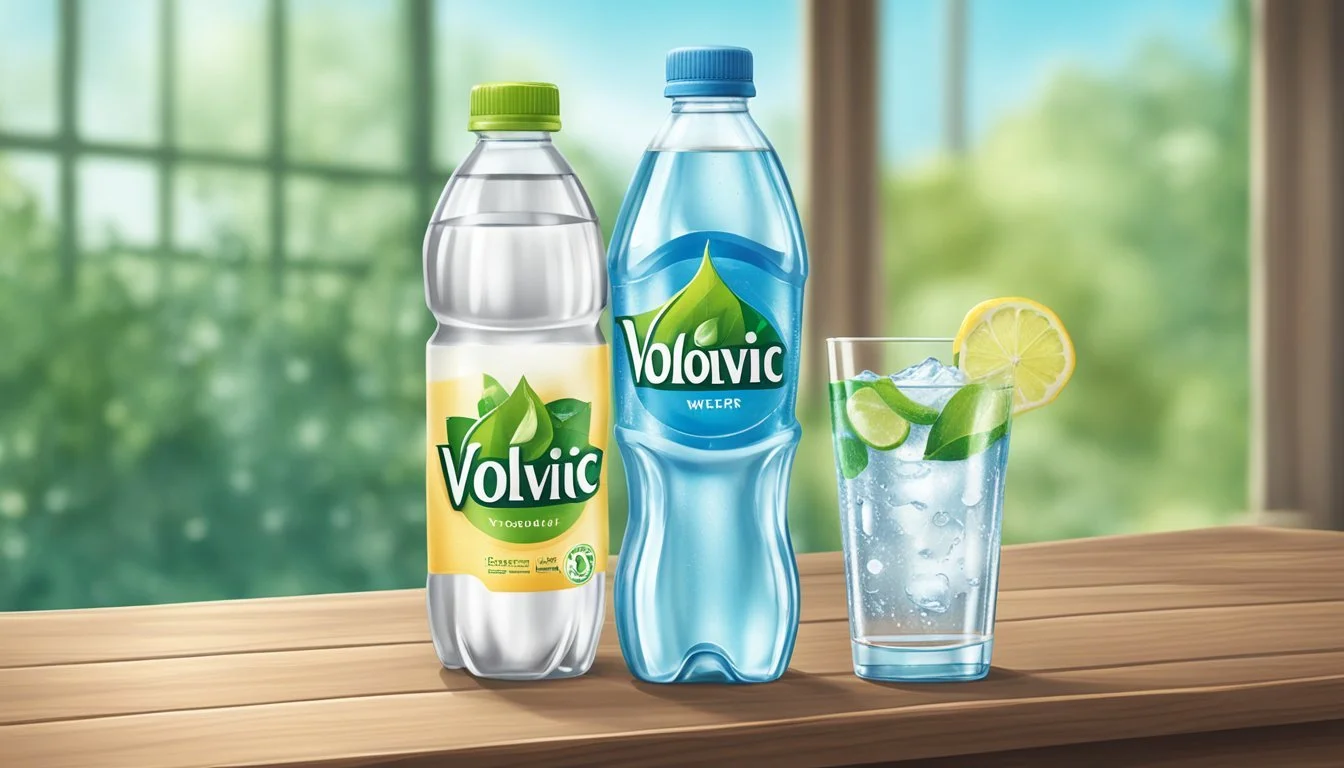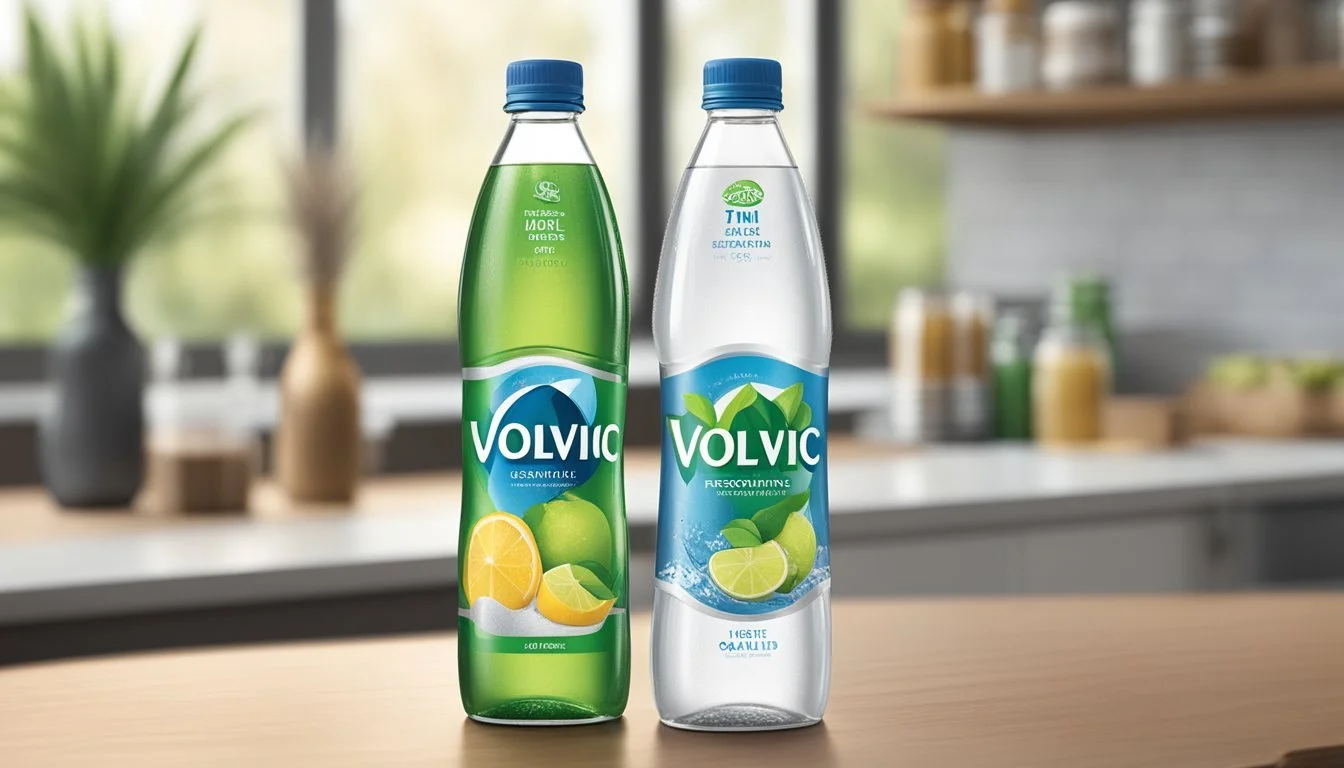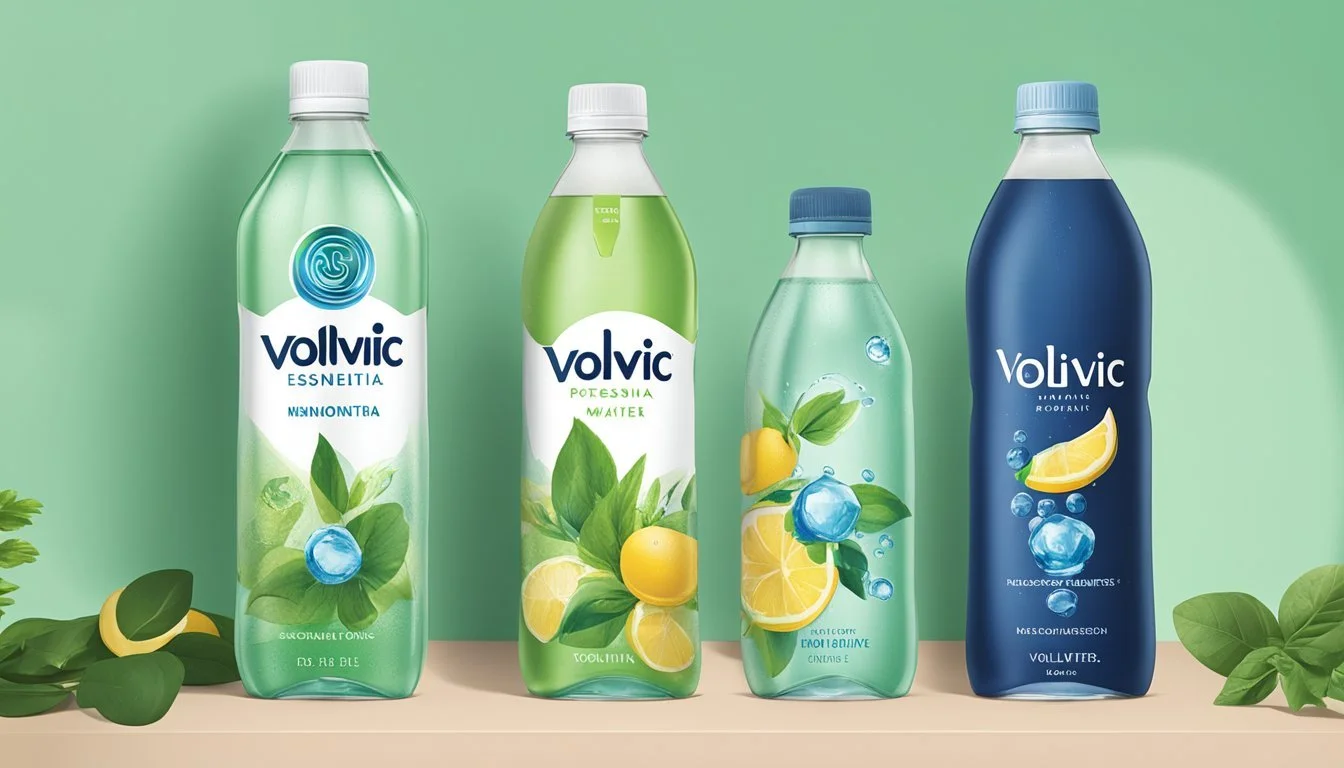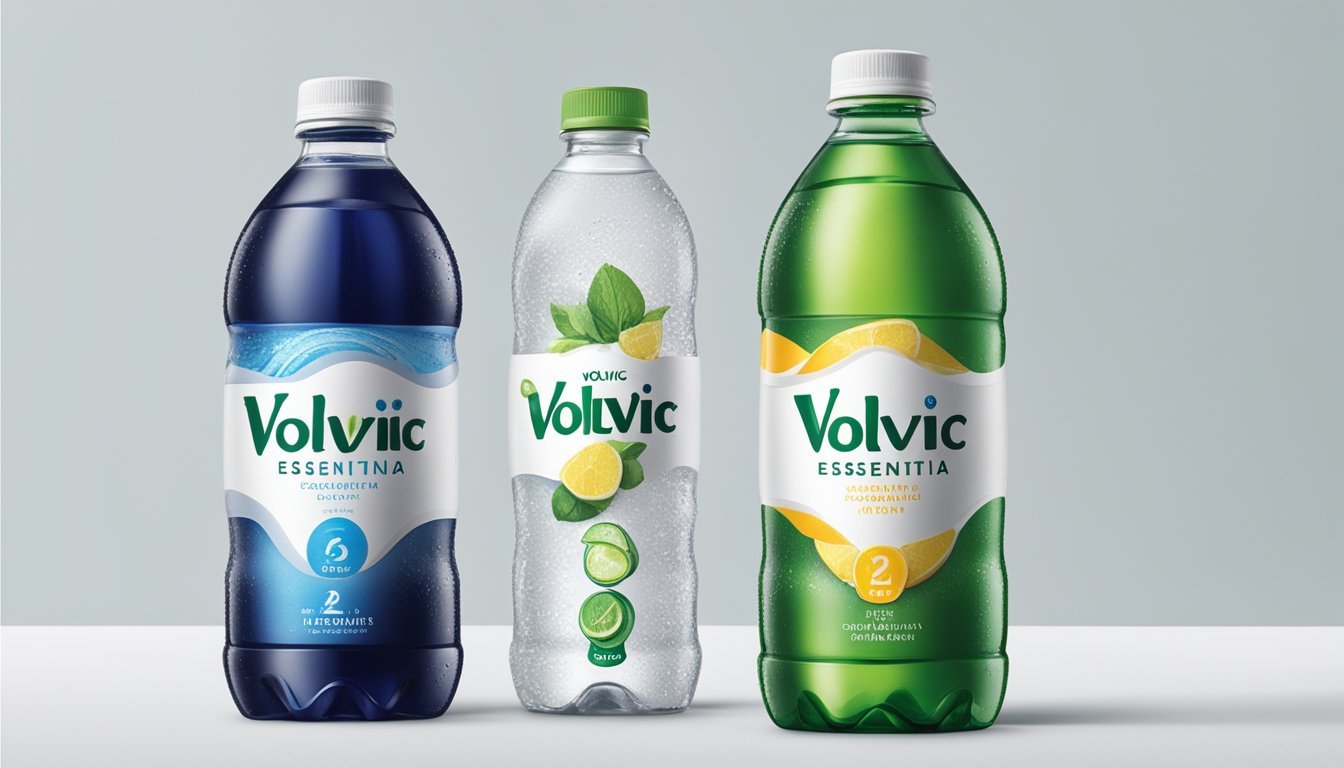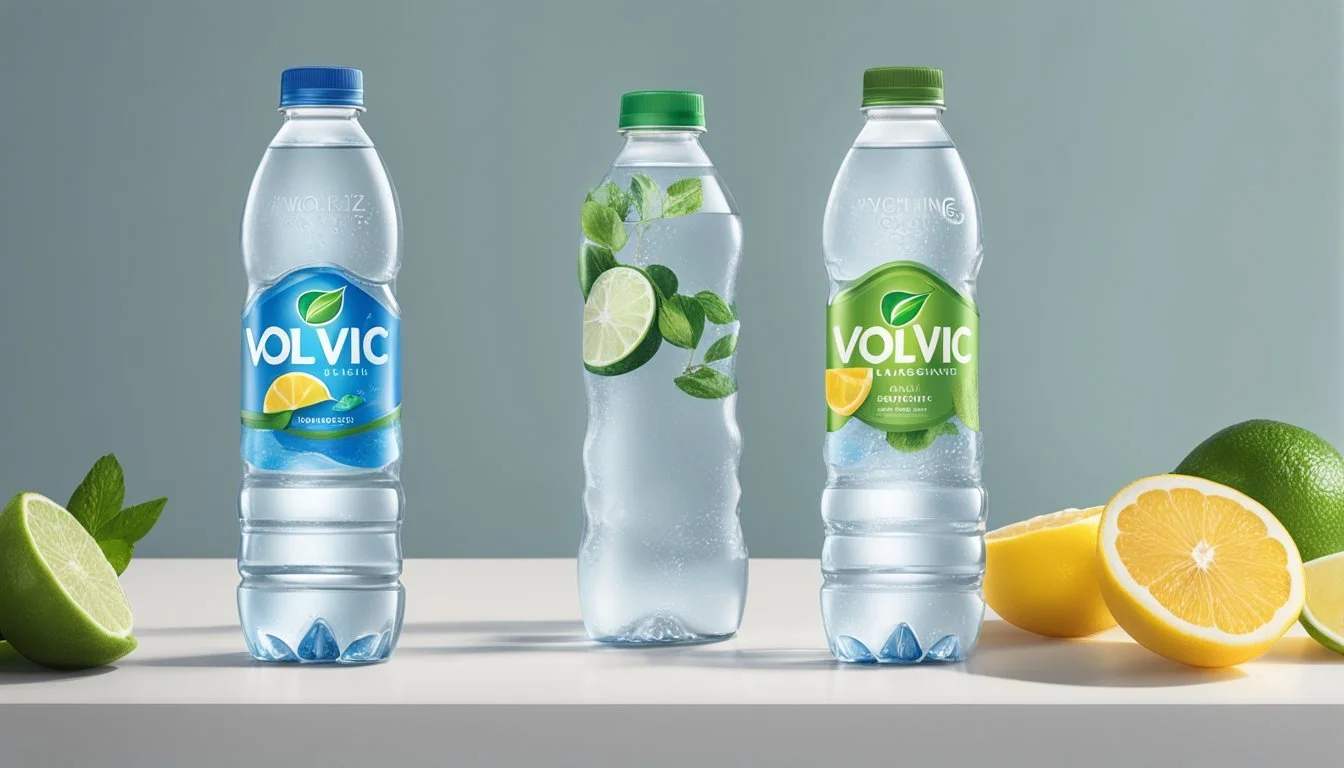Essentia vs. Volvic
Comparing Quality and Taste
Bottled water has become a staple in the global beverage market, offering consumers a portable and convenient source of hydration. Among numerous brands, Essentia and Volvic stand out for their unique selling propositions. Essentia is known for its ionized alkaline water with a pH of 9.5, claiming to deliver not just hydration but also various health benefits associated with alkaline water. Its proprietary process removes bitter-tasting ions, achieving a smooth and clean taste.
Conversely, Volvic, a French brand sourced from volcanic regions, is characterized by its naturally filtered water through ancient lava rock, which it claims enriches the water with minerals and electrolytes without any additional processing. This natural filtration is said to contribute to Volvic's distinct taste profile and mineral composition, providing essential hydration in a form that's close to nature's intended purity.
The choice between Essentia and Volvic may come down to personal preference, but it also invites consideration of factors such as taste, mineral content, pH balance, and the processes behind the final product. Consumers weigh these variables against their individual needs and environmental ethos, given the ongoing discussion about the impact of bottled waters on the planet.
The Importance of Hydration
Proper hydration is essential for overall health and plays a vital role in maintaining fitness levels.
Health Benefits of Staying Hydrated
Hydration is critical to a person's health. The human body depends on water to survive; every cell, tissue, and organ requires it to function correctly. Water is crucial for:
Regulating body temperature: Water's ability to release heat when it evaporates from the skin surface helps maintain an optimal body temperature.
Detoxification: It aids in flushing out waste products and toxins through urination, perspiration, and bowel movements.
Lubrication: It keeps joints lubricated, reducing the risk of discomfort and injuries.
Nutrient transportation: Water participates in the transportation of oxygen, essential minerals, and vitamins to cells.
Maintaining hydration can lead to improved cognitive function, better mood regulation, and a more resilient immune system.
Hydration and Fitness
When it comes to fitness, the role of hydration magnifies. Water helps to ensure:
Optimal performance: Being well-hydrated improves strength, power, and endurance.
Efficient recovery: Hydration is essential in the repair and rebuilding of muscles post-exercise.
Heat dissipation: During strenuous exercise, the body's need to dissipate heat increases; adequate hydration can prevent overheating and heat-related illnesses.
Fitness enthusiasts and athletes should pay particular attention to their fluid intake before, during, and after exercise to maintain peak performance and accelerate recovery.
Understanding Bottled Water
Exploring the diversity of bottled waters and their origins is crucial for informed consumption. The industry offers a wide range of products that differ in source, treatment, and quality.
Types of Bottled Water
Bottled water can be classified into several types:
Spring Water: Derived directly from a natural spring where water flows to the surface of the earth.
Mineral Water: Obtained from underground sources, it naturally contains at least 250 parts per million of minerals and trace elements.
Alkaline Water: Water that has a higher pH level than tap water; it may be naturally occurring or created by ionization.
Reverse Osmosis Water: Water that has been purified through a process that removes contaminants by pushing water through a semi-permeable membrane.
Electrolyte Water: Enhanced with electrolytes for taste and replenishing minerals, it can be natural or artificially added.
Bottled Water vs. Tap Water
Bottled Water: Often perceived as cleaner and more convenient than tap water, its quality can vary based on the source and processing methods.
Tap Water: Typically comes from municipal sources and while it is subject to strict quality regulations, such as the Safe Drinking Water Act, it is not free from contaminations like lead in some areas.
Water Source plays a significant role in determining the final quality of both bottled and tap water. Bottled water often originates from protected sources such as mountain spring water or groundwater, while tap water typically comes from surface water or municipal reservoirs.
Labels and Water Source Transparency
Labels on bottled water products provide consumers with information about the:
Source: Indicating whether the water comes from spring, mineral, or other sources.
Purity: Detailing the levels of minerals and contaminants, if applicable.
Process: Specifying if the water has undergone reverse osmosis, ozonation, or if it's enhanced with electrolytes.
Transparency regarding the water source is not just about credibility, but also about helping consumers make choices that align with their preferences for taste and mineral content.
Health and Safety Considerations
When evaluating the health and safety of bottled water brands Essentia and Volvic, consumers should consider potential contaminants, the filtration process, pH levels, and the risks associated with chemical leaching from the bottles themselves.
Contaminants and Filtration Processes
Essentia Water prides itself on its proprietary filtration process, which includes microfiltration, reverse osmosis, and ultraviolet exposure. This multi-step purification method effectively removes contaminants and heavy metals, ensuring the safety and purity of the water. Volvic, sourced from volcanic rocks, is naturally filtered and boasts a low presence of contaminants. Both brands comply with the strict regulations for bottled water safety, although Essentia's added purification process might appeal to those who prioritize an extra level of filtration.
Essentia Filtration: Microfiltration, Reverse Osmosis, UV Exposure
Volvic Filtration: Natural Volcanic Filtration
pH Levels and Health Impact
The pH level of water can have implications for health and taste. Essentia Water is known for its high pH, typically around 9.5, due to the addition of electrolytes for taste and a higher alkaline level. Some believe that alkaline water can contribute to neutralizing acid in the bloodstream, which may offer health benefits, although scientific evidence is mixed. Volvic has a more neutral pH, similar to the natural pH of pure water, and is less engineered in this regard.
Essentia pH Level: ~9.5 (Alkaline)
Volvic pH Level: Neutral (~7)
Water Bottles and Chemical Leaching
Both Essentia and Volvic use plastic bottles, raising concerns about potential chemical leaching. Bisphenol A (BPA) is a common concern with plastic containers but both companies utilize BPA-free bottles to minimize health risks. However, ongoing debates regarding the safety of BPA alternatives suggest that consumers should remain aware of potential risks. Additionally, PFAS chemicals, which are linked to adverse health effects, are potential contaminants in bottled water. Brands must ensure rigorous testing to detect and limit PFAS levels to protect consumer health.
Bottle Safety: BPA-free
PFAS Concerns: Must be rigorously tested for and limited
Comparative Analysis: Essentia vs. Volvic
In this section, we examine how Essentia and Volvic stack up against each other across various attributes including taste, nutritional content, purification processes, and environmental considerations. These insights aim to inform consumers about what each brand offers.
Taste and Texture Profile
Essentia Water is known for its smooth taste and texture, credited to its Hydro-7™ purification process which removes impurities and adds electrolytes. Its higher pH of 9.5 or more typically gives it a distinct, crisp taste preferred by those who seek ionized alkaline water. On the other hand, Volvic, sourced from volcanic regions of France, has a unique mineral-rich flavor profile that reflects its natural origin.
Nutritional Content
Both water brands diverge marginally on nutrition:
Essentia Water - Enriched with added electrolytes for taste and an alkaline pH level which may contribute to neutralizing body acidity.
Volvic - Contains naturally occurring minerals like calcium and magnesium, but does not emphasize an alkaline pH.
Purification and Enhancement Processes
Essentia Water undergoes microfiltration and reverse osmosis, ensuring 99.9% purity. Post-purification, it is enhanced with a blend of electrolytes for taste and then ionized to raise the pH level. Volvic's filtration process is a natural one, passing through volcanic rocks which enrich the water with minerals. It does not go through an electrolyte-enhancement process like Essentia.
Environmental Impact and Sustainability
Both brands undertake different sustainability measures:
Essentia Water focuses on using recycled materials for their bottles and aims to reduce carbon footprint.
Volvic has committed to carbon neutrality by 2021 and ensures that the water they source is done sustainably to preserve the ecosystem.
Market Position and Consumer Perceptions
Essentia Water has positioned itself strongly in the premium water segment, often preferred by consumers for hydration and sports. Its proprietary ionization process has garnered a following who attribute improved performance and taste to the brand. Volvic, with its longstanding history and natural sourcing story, holds a reputation for purity and its connection to the environment. It appeals to consumers prioritizing natural mineral content in their drinking water.
Environmental Impact of Bottled Water
The environmental consequences of bottled water consumption are significant and multifaceted. They encompass the challenges of plastic waste, the strain on water resources, and the role of innovative eco-friendly packaging solutions.
Plastic Waste and Recycling Issues
Plastic bottles, produced from petroleum, have become ubiquitous as bottled water containers. Plastic waste from these bottles poses a serious environmental issue due to its non-biodegradable nature. It is estimated that bottled water's environmental impact is significant, with the production process being resource-intensive. In Barcelona, a study highlighted that bottled water can have up to 3,500 times greater environmental cost than tap water. Although many plastic bottles are recyclable, the reality is that a substantial percentage of them end up in landfills or as litter, where they can take hundreds of years to decompose, if at all.
Percentage of plastic bottles recycled: Varies significantly by region
Time to decompose: Up to 450 years for a single plastic bottle
Water Resource Management
The bottled water industry's impact on water resources is not negligible. It often takes three times as much water to produce a plastic bottle as it can hold. Extrapolating the potential repercussions, if a city like Barcelona were to shift entirely to bottled water, the consequences for local ecosystems could be severe, with a potential loss of 1.43 species per year. This is indicative of the broader issue where the exploitation of water resources for bottled water production can lead to reduced water availability for local communities and ecosystems.
Water required to produce a plastic bottle: Triple its holding capacity
Potential species lost per year in Barcelona: 1.43
The Emergence of Eco-Friendly Packaging
In response to the environmental impacts, the bottled water industry is seeing a shift towards more sustainable options. Eco-friendly packaging such as boxed water or glass bottles offers alternatives to traditional plastic bottles. These materials often have a lower environmental footprint, can be more easily recycled, and signal a positive shift towards greater sustainability in bottled water consumption.
Examples of eco-friendly packaging: Boxed water, glass bottles
Recycling ease compared to plastic: Generally higher for glass and boxed water
The bottling of water, whether by brands like Essentia or Volvic, implicates these concerns and the ongoing dialogue about environmental stewardship in the industry.
Consumer Guidance
In choosing between Essentia and Volvic, consumers face a decision that hinges on personal health priorities and environmental impact. This section aims to facilitate that choice by offering clear, actionable advice.
Identifying the Best Bottled Water for Your Needs
Consumers must first define what "best" means in the context of bottled water. It could refer to taste, mineral content, pH level, or source purity. Essentia is known for its higher pH, created through electrolysis, which some consumers prefer for its potential health benefits. Volvic, sourced from volcanoes in France, is naturally rich in minerals and has a unique taste profile.
How to Read Water Quality Reports
Water quality reports are crucial for consumers who want to understand what they are drinking. These reports typically include:
Sources of water (e.g., springs, wells, aquifers)
Levels of minerals and electrolytes
Presence of contaminants or chemical additives
pH levels
For instance, a report might list that Essentia has a pH of over 9, whereas Volvic might detail its unique volcanic filtration. Consumers should look for water test results from reputable sources like Consumer Reports or third-party laboratories.
Tips for Sustainable Consumption
Sustainability should be a key concern when selecting bottled water. Consumers can look for:
Bottles made from recycled materials
Company recycling practices
Environmental initiatives by the water brand
For instance, they may find that one brand uses a higher percentage of recycled plastics or supports global clean water initiatives, making it a more sustainable option. Both Essentia and Volvic have environmental claims; however, consumers should assess the veracity and impact of these claims independently.
In summary, the choice between Essentia and Volvic rests on a personal preference for water qualities and a consumer’s commitment to sustainability practices.
Legal and Industrial Standards
In analyzing Essentia and Volvic waters, it's critical to understand the governance and protocols they adhere to. This ensures the safety and quality of bottled water products.
Regulations and Safety Standards
Bottled water, including brands like Essentia and Volvic, is subject to stringent safety and quality standards. Federal inspectors and state regulators enforce these standards to protect public health. Guidelines for bottled water include:
Microbiological Standards: Ensuring the absence of harmful bacteria and pathogens.
Chemical Standards: Preserving water quality by limiting the presence of contaminants such as lead and arsenic.
Radiological Standards: Monitoring for radioactivity that could pose health risks.
These standards are set to assure consumers that bottled water is safe to drink and of high quality.
The Role of Federal and State Regulators
Federal regulators, particularly the U.S. Food and Drug Administration (FDA), oversee the bottled water industry. The FDA classifies bottled water as a food product, which implies adherence to specific provisions under the Federal Food, Drug, and Cosmetic Act.
State regulators also play a vital role by enforcing additional local standards and conducting inspections. Both federal and state entities collectively aim to ensure that consumers receive a product that is both safe and accurately represented.
International Bottled Water Association (IBWA)
The International Bottled Water Association (IBWA) sets forth a code of standards for its members that often surpass government regulations. Compliance with IBWA standards is verified through annual unannounced plant inspections by third-party auditors. The IBWA also advocates for:
Sustainable practices: Promoting resource management and environmental stewardship.
Education: Informing consumers and policymakers about the bottled water industry.
Membership in IBWA signifies a commitment to high-quality, safe bottled water products that consumers can trust.
Conclusion
Essentia and Volvic are both reputable bottled water brands, each offering its unique benefits. Essentia boasts water with a high pH level of 9.5, which is preferred by consumers seeking alkaline water for its potential health benefits. It claims to hydrate better due to its electrolyte-enhanced formula, utilizing a proprietary ionization process to achieve its notably high pH.
On the other hand, Volvic comes from volcanic regions of France, where water is naturally filtered through lava rock, infusing it with minerals. This brand emphasizes the natural purity of its product, which appeals to consumers who value minimal processing and a clean taste profile.
When choosing between the two, consumers should consider the following factors:
pH Preference: Essentia is alkaline, while Volvic is neutral.
Taste: Volvic's mineral content may influence its taste.
Processing: Essentia undergoes ionization, whereas Volvic touts natural volcanic filtration.
Ultimately, the decision hinges on individual preferences for taste, pH balance, and the importance placed on natural sourcing versus scientific enhancement. Both brands maintain a commitment to quality, but they cater to different segments of the bottled water market.

